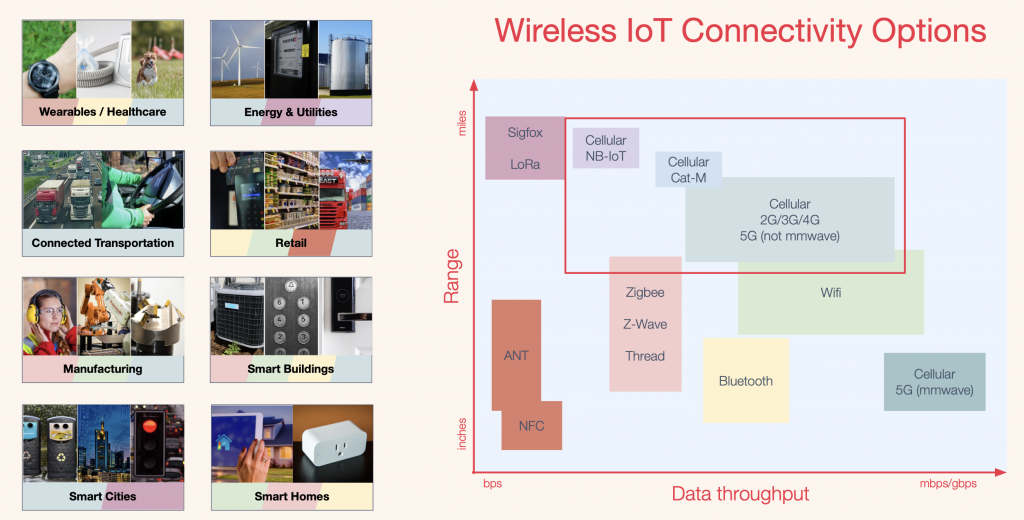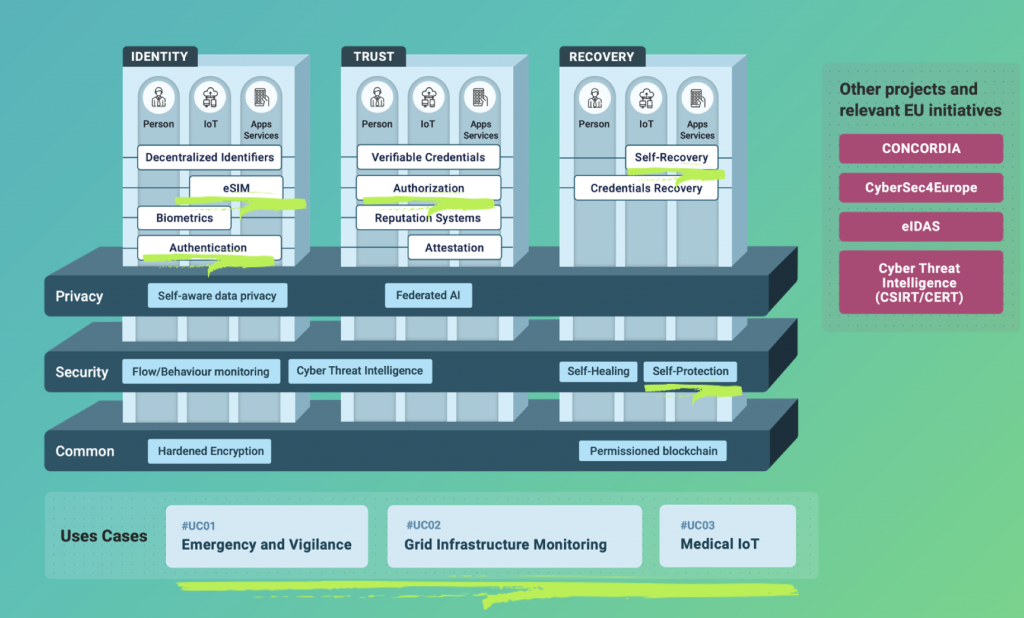These TADSummit 2022 reviews are a chance to give all the excellent content deserved attention and add my commentary on its importance. This is the last in the series.
In this article I cover the presentations focused on IoT, a maturing segment of programmable communications, that’s moved beyond the silly hype. The ‘+’ is because I include Mark White’s M&A presentation as well.
Here are the links to the review of the Keynotes, to my presentation What Happened Since we Last Met?, the review of Conversation Intelligence, the review of Telcos and Programmable Communications, and review of the Open Source presentations.
With these links you can get to all the TADSummit content directly: Photos, Videos, Slides, Brief Agenda with videos and slides, Full Agenda with videos and slides.
Thank you to STROLID, Broadvoice / GoContact, Radisys, RingCentral, Stacuity, and AWA Network / Automat Berlin for sponsoring TADSummit 2022. And thank you to all the presenters and attendees in making the event excellent.
I’ll cover in this review:
- What makes a cellular IoT API great? Tobias Goebel, Principal Product Marketing Manager, IoT, Twilio (REMOTE). Slides and Video
- How a Multi-IMSI architecture makes global cellular IoT deployments manageable. Tobias Goebel, Principal Product Marketing Manager, IoT, Twilio (REMOTE). Slides and Video
- eSIM as Root of Trust for IoT security. João Casal, Head of R&D at Truphone. Slides and Video
- eSIM Reality. Fredric Liljeström, Co-founder and CEO, 10T Tech (REMOTE) Slides and Video
- M&A in Communications Technology. Mark White, Tech M&A, Investor, Founder, Board Member, Startup Mentor, SVP Corum Group. (REMOTE) Slides and Video
What makes a cellular IoT API great?
Tobias Goebel, Principal Product Marketing Manager, IoT, Twilio (REMOTE). Slides and Video
Tobias provides an excellent review of why a company would use an API for managing their IoT devices. I particularly liked the mapping of wireless technologies for IoT, see picture below.

I recommend everyone review the “Characteristics of a great API” in Tobias’ presentation:
- Documented and jargon free. You need a copywriter, not one of your developers. Sample code in lots of languages is essential, as most of us are cut’n’paste programmers.
- If you announce a new feature it MUST be in the documentation when its announced. Without documentation a new feature is near useless, worse it’s really annoying.
- Also make sure search points to the documentation when the new feature is available.
- Have not only lots of sample code for the new feature, but billing and log examples, so your customers knows what to expect. There’s more advice Tobias provides in the presentation.
- Backwards compatible – IoT devices will be in the field for potentially a decade +.
- Check the API versioning, when does support get cut off on older versions of their APIs? Would such a change impact your use case?
- Reliable under stress – check your API SLA, review what other customers have said. What’s the maintenance window? What can you do with the API during that window? If its a large deployment, make sure everything is stated in the contract on SLAs, performance during maintenance windows, especially for a multi-country deployment. There’s more great advice Tobias provides in the presentation.
- Active Developer Community. Quite a few big name CPaaS have discussion board where months go by between developer questions and comments. Tobias advises, ‘ask your developer’ if they have they heard of the API provider. On this point I disagree, Twilio is top dog in dev relations for programmable communications. Here I’d advise you have your developer look at the company’s resources and let you know how it compared to Twilio.
- Well-supported. Do they have a developer.company.com site, do they have chat, e.g. a Slack channel. Again Tobias provides lots more handy tips. When I analyze companies I use many of these tips to determine if the ‘developer’ part of their business is window dressing.
How a Multi-IMSI architecture makes global cellular IoT deployments manageable.
Tobias Goebel, Principal Product Marketing Manager, IoT, Twilio (REMOTE). Slides and Video
I really enjoyed Tobias’ presentation, it shows the maturity of IoT, and why programmable communications providers are a better fit than telcos for musch of IoT. He reviews how local, roaming, eUICC eSIM, and multi-IMSI SIMs connect through mobile networks. The benefits of the multi-IMSI include:
- Only one SIM (= one SKU) to procure.
- Access to many networks
- One provider to manage
- One core, decoupled from carriers
- No network steering – where telcos use their intelligent network to mess with your traffic.
UICC stands for Universal Integrated Circuit Card. I think of eSIM is the whole service – SIM + eUICC + platform; eUICC is the software that allows provisioning. Below shows an important benefit of the Multi-IMSI approach, redundancy. Network coverage is not universal even in urban and suburban locations, but between carriers it can be.

eSIM as Root of Trust for IoT security.
João Casal, Head of R&D at Truphone. Slides and Video
Truphone have been part of TADHack and TADSummit since 2014. They have 25 million eSim profiles generated and provisioned. João was presenting his work on a more robust IoT security framework. IoT security was one of the trends in Stacuity’s IoT Trends for 2023, covered in CXTech Week 2 2023.
The security framework is from an EU funded project called ACADIAN-IoT (Autonomous Trust, Security and Privacy Management for IoT), shown below. João focused on the role eSIM plays in this framework. It generated lots of interest and I provided several introductions to João after the event as people reflected on its importance.

eSIM enables the well-proven SIM authentication model to be extended for IoT authentication in services like AWS, Azure, or in private clouds. Benefits include:
- Lightweight: no new cryptographic material – just the SIM secrets and processes; no added hardware (just the SIM, eSIM, iSIM… already needed for connectivity).
- Secure: Leverages proven security standards
- Scalable: No added provisioning effort on IoT device manufacture time (other than the SIM)
eSIM Reality.
Fredric Liljeström, Co-founder and CEO, 10T Tech (REMOTE) Slides and Video
This was another great no BS review of where we are in eSIM. 10T Tech’s flagship product is My10T, a purpose-built eSIM lifecycle management platform. Mobile carriers can experience My10T through a rapid, free of charge POC, with your own data, deployed within a week.
Since launching in 2018, 10T Tech has deployed to over 70 mobile carriers and is now considered one of the industries most trusted eSIM Ecosystem providers.
Fredric provides a nice intro to eSIM and some of the misconceptions. I particularly like the review of the barriers. eSIM has been slow to take off, and it’s mainly due to protection of existing revenues across SIM vendors, telcos, and network vendors. Telcos generally select existing vendors, so disruptive new entrants are given little room.
Another significant barrier is the need to bootstrap the eSIM to a telco, this has limited eSIM adoption by device manufacturers. In Tobias’ presentation you’d adopt Twilio’s multi-IMSI eSIM. 10T Tech have a LPA (Local Profile Assistant) that can be put into the eSIM.
An interesting data point from 10T Tech is the 280% increase in monthly eSIMs over 2022. And of course the iPhone 14 being eSIM only in the US is the critical turning point for eSIM.
M&A in Communications Technology.
Mark White, Tech M&A, Investor,Founder, Board Member, Startup Mentor, SVP Corum Group. (REMOTE) Slides and Video
Mark has been with TADS since the beginning, since the first TADSummit event in Bangkok in 2013. Which reminds me the COO of 10T Tech, Craig Richards, was also there in the beginning 🙂 As well as Dinesh Saparamadu, CEO of hSenid Mobile.
Being the 10 year anniversary of TADSummit, it was important to me to have some of the original cast members be part of TADSummit 2022.
Back to Mark’s presentation. He’s moved from being an entrepreneur to selling companies. If you’re thinking about selling your company, talk with Mark, he’ll give you a no-BS perspective.
Mark reviews the volume of transactions, and focuses in on some of the smaller programmable communication companies. Even with the worries about the economy we’re still seeing deals. For example Tofane Global Acquiring DIMOCO, covered in CXTech Week 2 2023. So rather than companies with inflated valuations buying, the pendulum has swing to those sat on cash, e.g. investment funds/vehicles and large established businesses taking advantage of the less inflated market. Is it the right time to sell for you? Best talk to Mark.
With these links you can get to all the TADSummit content directly: Photos, Videos, Slides, Brief Agenda with videos and slides, Full Agenda with videos and slides.
For TADSummit 2023 we’re thinking about the Thursday/Friday before Network X in Paris. With TADHack Global over that weekend, so the dates would be:
- 19-20 Oct TADSummit in Paris
- 21-22 Oct for TADHack Global
- 24-26 Oct, Network X where we have a TADHack session
Please let me know what you think of this idea? Nothing is set in stone, we have complete flexibility. Thanks.

6 thoughts on “IoT+ Review TADSummit 2022”
Comments are closed.